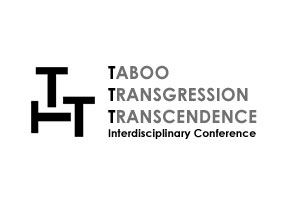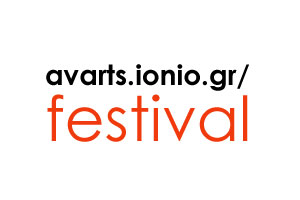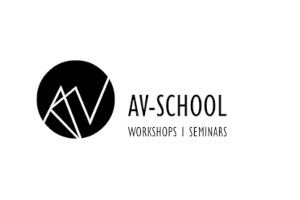From Cultural Data to Adaptive Gamified Experiences: An AI-Assisted Approach for Cultural Heritage Education and Tourism – The Case of Santa Maura Castle
Ioanna Afroditi Mazi,
Ph.D Candidate, Institute for Games Research, Ionian University, Corfu, Greece, a20mazi@ionio.gr
Ioannis Deliyannis,
Professor, Institute for Games Research, Ionian University, Corfu, Greece, yiannis@ionio.gr
Keywords: Cultural Heritage, Artificial Intelligence, Personalization, Gamification, Transmedia, Adaptive Experiences, User Experience, Santa Maura Castle
Summary
This paper examines the integration of artificial intelligence (AI) into the design and development of adaptive, gamified cultural heritage experiences. It presents a case study conducted at the Castle of Santa Maura on Lefkada Island, where AI-driven content generation was used alongside human expertise to create an interactive, educational experience for primary school students. The study explores the effectiveness of AI-generated content in enhancing engagement and learning within cultural heritage settings while identifying the limitations in personalization, transmedia storytelling, and real-time adaptivity. The findings contribute to ongoing research on AI applications in cultural heritage and propose strategies for future implementations that emphasize dynamic content personalization, user modeling, and multi-platform engagement.
Objective
The primary objective of this case study is to assess the potential of AI-assisted tools in generating engaging, gamified experiences for cultural heritage education and tourism. Specifically, the research investigates how AI can support cultural experts in designing adaptive and interactive educational content that enhances user engagement. This paper aims to identify gaps in the derived AI-driven cultural heritage experience, particularly regarding real-time personalization and transmedia integration. The ultimate aim of this case study is to serve as a staring point for broader research of the topics for the Ph.D candidate’s future work.
Theoretical Framework
The study builds upon existing research in cultural heritage interpretation, gamification, adaptive storytelling, AI-driven personalization, and user experience (UX) design. Prior studies emphasize the role of experiential and interactive learning in heritage education, highlighting the need for adaptive digital tools to cater to diverse audiences (Pencarelli, 2020; Filipchuk & Udych, 2021). AI technologies, such as natural language processing and machine learning-based recommendation systems, have shown promise in personalizing cultural heritage content (Not & Petrelli, 2019; Raptis et al., 2019). Additionally, gamification and transmedia storytelling have been explored as mechanisms for increasing engagement and retention (Bartolini et al., 2016; Aebli, 2019; DaCosta & Kinsell, 2022). This research integrates these themes into a comprehensive framework that leverages AI to create dynamic, user-centered cultural heritage experiences.
Research Design and Methods
The research follows a mixed-methods approach, combining qualitative and quantitative analysis to assess the effectiveness of AI-assisted content generation in cultural heritage education. The case study was conducted at Santa Maura Castle, involving a pilot educational program designed for 4th-, 5th- and 6th-grade students. The study's methodology consisted of the following steps:
- Preliminary Expert Consultation: A music educator collaborated with the research team to define educational objectives, target audience characteristics, and time constraints for the activities.
- AI Tools Integration: AI engines (ChatGPT, Julius, and Gemini) were employed to generate activity ideas based on historical data and educational goals. AI-generated suggestions were compared to expert-designed content.
- Activity Implementation: Four gamified milestones were developed, incorporating musical components and historical narratives. The activities were tested with three different student groups during three pilot sessions.
- Data Collection and Analysis: Student engagement levels were observed and recorded, and post-activity feedback was collected from both students and the music educator. AI-generated and expert-generated content was evaluated for effectiveness, alignment with pedagogical goals, and historical accuracy.
Conclusion
The case study demonstrates that AI-driven content generation can accelerate the ideation process and offer innovative educational experiences in cultural heritage settings. Gamified activities enhanced student engagement, confirming the potential of interactive learning approaches. However, the case study also revealed critical gaps in AI-generated content, particularly in real-time personalization and transmedia expansion. The AI-generated suggestions required refinement to align with educational objectives and time constraints, underscoring the importance of expert oversight. Future research should focus on enhancing AI-driven adaptivity through real-time user modeling, enabling experiences that dynamically adjust to visitors' preferences and learning needs. Additionally, integrating transmedia storytelling across multiple platforms could enrich cultural heritage experiences beyond the physical site. The study highlights the necessity of interdisciplinary collaboration between cultural heritage professionals, educators, technologists, and AI researchers to develop more sophisticated, user-centered experiences that bridge the gap between static historical narratives and dynamic, interactive engagement.
References
Aebli, A. (2019). Tourists’ motives for gamified technology use. Annals of Tourism Research.
Agarwal, P., Swami, S., & Malhotra, S. K. (2022). Artificial Intelligence Adoption in the Post COVID-19 New-Normal and Role of Smart Technologies in Transforming Business: A Review. Journal of Science and Technology Policy Management.
Bartolini, I., Moscato, V., Pensa, R., et al. (2016). Recommending multimedia visiting paths in cultural heritage applications. Multimedia Tools and Applications, 75, 3813–3842.
DaCosta, B., & Kinsell, C. (2022). Serious Games in Cultural Heritage: A Review of Practices. Education Sciences, 13(1), 47.
Filipchuk, N., & Udych, Z. (2021). Social Aspect of Museum-Educational Interaction. Aesthetics and Ethics of Pedagogical Action.
Not, E., & Petrelli, D. (2019). Empowering cultural heritage professionals with tools for authoring and deploying personalized visitor experiences. User Modeling and User-Adapted Interaction, 29, 67–120.
Pencarelli, T. (2020). The digital revolution in the travel and tourism industry. Inf Technol Tourism, 22, 455–476.
Raptis, G., Fidas, C., Katsini, C., & Avouris, N. (2019). A cognition-centered personalization framework for cultural-heritage content. User Modeling and User-Adapted Interaction, 29, 9–65.
Back





